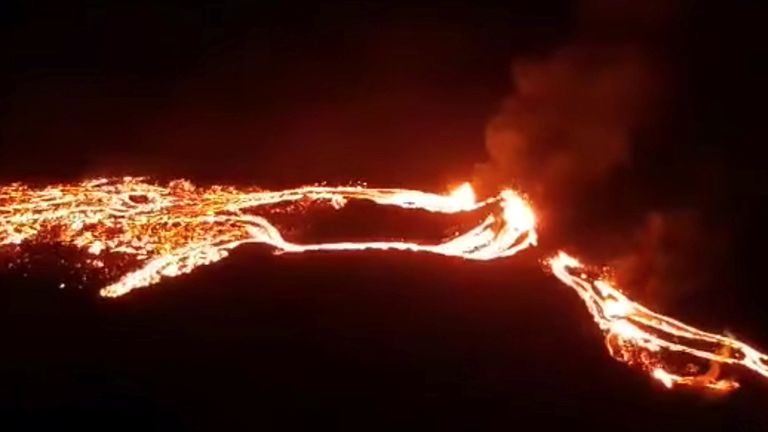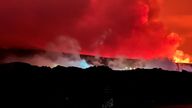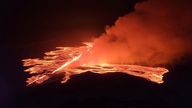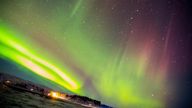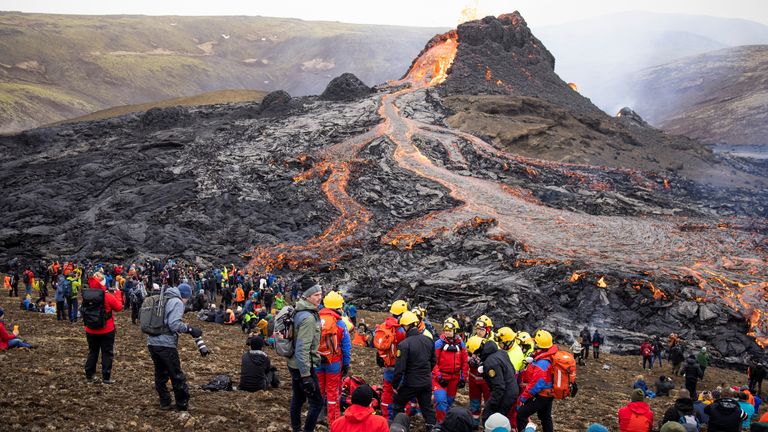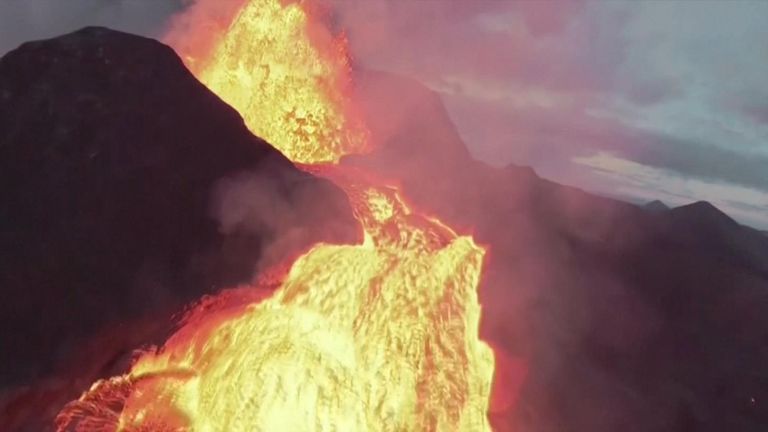Ongoing Iceland volcanic eruption now the longest in 50 years
It has become a major tourist attraction according to Iceland's tourist board, attracting potentially upwards of 300,000 visitors.
Monday 20 September 2021 14:09, UK
An ongoing volcanic eruption in Iceland is now the longest the country has seen for more than 50 years, as Sunday marked the sixth month lava has been erupting from a fissure near Mount Fagradalsfjall.
The eruption near the capital Reykjavik began on 19 March and has continued ever since.
Sometimes the volcano has thrown enormous amounts of molten rock into the air while at other times emitting just a slow trickle of lava, but it is now the longest eruption for half a century.
As the country is part of the mid-Atlantic tectonic ridge, it is a hotbed for volcanism, with a number of volcanoes, geysers and earthquakes.
Although the length of the eruption has overtaken the Holuhraun eruption which ran from August 2014 to February 2015, the 143 million cubic metres of lava which has been spurted out by Fagradalsfjall is less than a tenth of what was emitted at Holuhraun.
It has become a major tourist attraction according to Iceland's tourist board, attracting potentially upwards of 300,000 visitors.
Thousands of people have headed to the Reykjanes Peninsula near the town of Grindavik, around 19 miles (30km) southwest of the capital Reykjavík, to catch a glimpse of the orange-hued display.
Some visitors were even pictured grilling food on the scorching crust of magma as they soaked up the unique experience.
The longest-known eruption on the island lasted almost four years, from November 1963 until June 1967, and created the volcanic island Surtsey, the southernmost point of Iceland.
In 2010 the eruption of Icelandic volcano Eyjafjallajökull forced hundreds of homes to be evacuated and created an enormous cloud of volcanic ash that disrupted air travel across Europe.
"It's a perfect tourist eruption," Thorvaldur Thordarson, volcanology professor at the University of Iceland, said. "With the caveat though, don't go too close."
He compared the lava flux to that of the Pu'u 'O'o eruption in Hawaii, which began in 1983 and continued to erupt for 35 years. "It could end tomorrow or it could still be going in a few decades."
The eruption is "special in the sense that it has kept a relatively steady outflow, so it's been going quite strong," according to Halldor Geirsson, a geophysicist at the Institute of Earth Science, who spoke to the AFP news agency.
"The usual behaviour that we know from volcanoes in Iceland is that they start really active and pour out lava, and then the outflow sort of decreases over time until it stops," he said.

